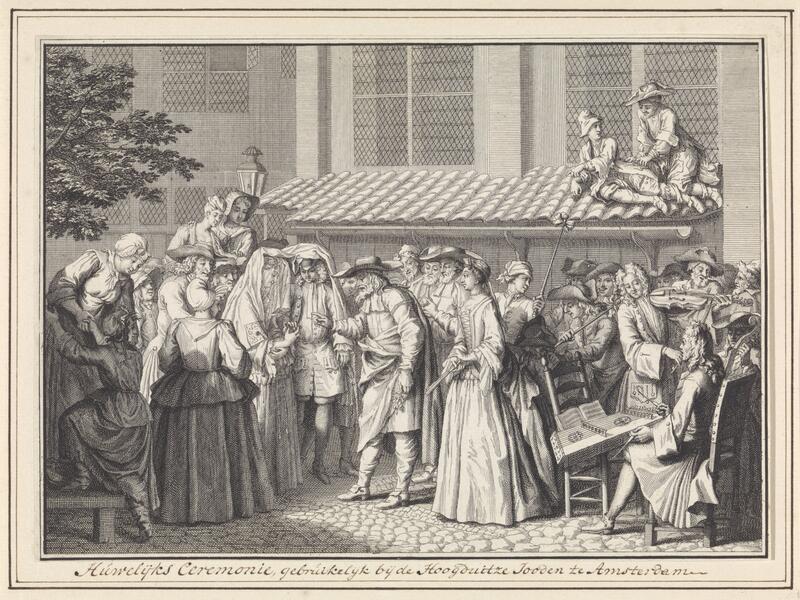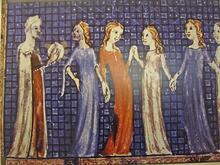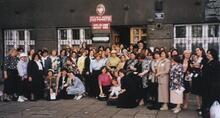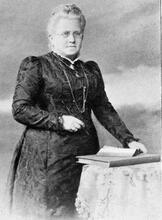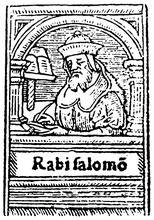Halakhic Decisions on Family Matters in Medieval Jewish Society
Across the medieval Jewish world, rabbis used takkanot (rabbinic decrees) to address urgent needs in family life among their Jewish communities. These takkanot included rulings about wives who wanted divorce, ketubah payments, polygamy, women’s consent for divorce, absentee husbands, women’s ability to inherit, the extortion of a halitzah, domestic violence, and provisions to reduce the divorce rate. Many of these rulings gave women more rights and protection than they enjoyed under standard halakha, though many have lapsed over time. Takkanot are key historical sources for understanding the changing roles of women in the medieval Jewish world.
The Regulation supplementing the laws of the Torah enacted by a halakhic authority.takkanah (regulation enacted by The legal corpus of Jewish laws and observances as prescribed in the Torah and interpreted by rabbinic authorities, beginning with those of the Mishnah and Talmud.halakhic scholars supplementing the Talmudic The legal corpus of Jewish laws and observances as prescribed in the Torah and interpreted by rabbinic authorities, beginning with those of the Mishnah and Talmud.halakhah) was, in practical terms, a legislative tool of major importance in organizing Jewish communities in medieval times. The Jewish communities of the time felt they were subordinate to Talmudic law, which they saw as sacred and binding. But when urgent needs arose which put the Jewish community under pressure, the sages’ preferred manner of coping with them was the takkanah, which the Lit. "teaching," "study," or "learning." A compilation of the commentary and discussions of the amora'im on the Mishnah. When not specified, "Talmud" refers to the Babylonian Talmud.Talmud refers to as a legislative tool.
Several adjacent communities might accept a local takkanah, while some Regulation supplementing the laws of the Torah enacted by a halakhic authority.takkanot applied to all Jewish communities in a given country. Takkanot regarding family matters are most important to the historian because they reveal far-reaching changes in women’s status over time. Had there not been vital need in this area, the sages would not have changed early halakhah, which they considered sacred. Dozens of takkanot on family matters are mentioned in medieval literary sources. The most important compilation is in Abraham Hayyim Freiman’s book, Lit. "order." The regimen of rituals, songs and textual readings performed in a specific order on the first two nights (in Israel, on the first night) of Passover.Seder Kiddushin ve-Nissu’in (Jerusalem, 1964). Another important collection is Louis Finkelstein’s Jewish Self-Government in the Middle Ages (New York, 1924), which includes many takkanot on family matters.
The following are ten of the most important takkanot on family matters. Two are from Babylon from the period of the Head of the Torah academies of Sura and Pumbedita in 6th to 11th c. Babylonia.Geonim, four are from Germany, two from France and two from Spain. Some of the takkanot remained in force for generations, even to this day, and had a decisive influence on women’s status. They appear in chronological order.
The Moredet
In 651 c.e., the Babylonian sages ruled that any woman who wished to be divorced from her husband (a moredet) should receive her get immediately. The religious court compelled the husband to divorce her with the full compensation stipulated in her Marriage document (in Aramaic) dictating husband's personal and financial obligations to his wife.ketubbah. This takkanah was in effect for more than five hundred years, and in some Jewish communities far longer. The husband no longer had the exclusive right to dissolve the family unit, as set forth in the Codification of basic Jewish Oral Law; edited and arranged by R. Judah ha-Nasi c. 200 C.E.Mishnah and the Talmud, while the woman achieved equal rights in this important area. Moreover, many sages thought that this might involve actual compulsion, beating the husband with sticks until he agreed to give the get (Ozar ha-Geonim le-Ketubbot, Benjamin M. Lewin edition, 191–192). Furthermore, in cases where the woman did not exercise the right of compulsion against a violent, abusive husband, her very ability to threaten him with it and demand her ketubbah was enough to strengthen her position in the family. It is hard to imagine that the Jewish sages would have formulated such a halakhically far-reaching takkanah if the new reality of the time had not forced them to do so. The Geonim recorded that Jewish women in the seventh century asked for the Muslim authorities’ assistance in receiving a get, and the latter forced the Jewish husbands to divorce their wives. It is conceivable that the Muslims did this to encourage Jewish women to convert to Islam. Muslim law annulled the previous marriage of a woman convert to Islam, and so a woman could attain freedom from her husband without his consent. We can see the issue of the moredet as women’s struggle for recognition of their right to dissolve the family unit and receive a get from their husbands while retaining their economic rights.
In the twelfth century, a large-scale retreat from the takkanah of the moredet occurred both in Christian Europe and in some Muslim countries. Among those who fought the takkanah were the Moses ben Maimon (Rambam), b. Spain, 1138Rambam (Rabbi Moses ben Maimon, 1138–1204) in Egypt and Rabbenu Jacob ben Meir Tam of France (c. 1100–1171).
Rabbenu Tam’s stand on the subject had a decisive effect on the next generation of sages in Germany and France. He took an aggressive stance against the takkanah of the moredet, claiming that the Babylonian sages had had no right to institute any takkanah that could compel a husband to grant a divorce since compulsion is inappropriate and casts doubt on the get’s validity. Therefore, later generations certainly should not act according to this takkanah. His harsh statements made a strong impression on the sages in various places, especially because of the fear that a forced divorce rendered any children from the woman’s second marriage illegitimate. An additional factor weighed heavily in favor of repealing the takkanah or reducing its force: the sages’ feeling that women’s independent status in Europe would lead to a proliferation of divorces. A woman could easily force her husband to give her a divorce, and indeed the percentage of divorces in medieval Jewish society was high. These fears show how strong women’s status was at that time.
“Movable Property” Ketubah Payments
According to Talmudic law, a woman had the right to demand the amount of her ketubbah in “immovable property,” meaning houses and land. The Geonim formulated a takkanah in 785 c.e. stating that a woman had the right to demand the amount of her ketubbah from any of her husband’s property. The vital need for this takkanah arose from the great change in Jewish economic activity and place of residence. If in the past most Jews had earned their living in agriculture, by the eighth century many of them had left the villages for the cities and worked as merchants or in other professions. It was impossible to keep the Talmudic law in effect without causing grave harm to women’s right to receive financial support upon their husband’s demise.
Polygamy
In about 1000 c.e., Rabbenu Gershom (Gershom ben Judah Me’or ha-Golah, c. 960–1028), who lived in Germany, formulated a takkanah decreeing Ban; excommunication (generally applied by rabbinic authorities for disciplinary purposes).herem (excommunication) upon any man who married more than one wife. This takkanah, like all other takkanot of Rabbenu Gershom, was approved and accepted as a binding rule for the community in conferences of the sages of Ashkenaz in later generations. This approval rendered the takkanot more binding than a takkanah promulgated by only one sage, even if he was of important stature. Monogamy was accepted in Germany even before Rabbenu Gershom’s takkanah, but there was now a vital need for it, primarily due to the contemporary economic activity of German Jews, many of whom worked in international trade. Some merchants who stayed in various countries including Provence, Spain, North Africa and other places under Muslim rule, sometimes for many years, occasionally took a second wife. It was not only their personal situation which had an impact; authoritative early sources in the The discussions and elaborations by the amora'im of Babylon on the Mishnah between early 3rd and late 5th c. C.E.; it is the foundation of Jewish Law and has halakhic supremacy over the Jerusalem Talmud.Babylonian Talmud tell of great sages who married a second wife when they stayed far from their homes. The custom among Muslims and some Jews in Muslim countries to take more than one wife also encouraged such marriages. Indeed, the halakhic literature of the sages active in Muslim countries at the time contains reports of people who came from far away and married women for a time without revealing that they already had another wife elsewhere.
Did Rabbenu Gershom restrict his herem against polygamy only to the end of the fifth millennium (1240 c.e.)? The earliest tradition confirming the restriction came from a Spanish sage, Rabbi Solomon ibn Adret (the Rashba, c. 1235–1310), but there is still considerable doubt as the validity of this testimony, since to this day no corroborating testimony whatsoever has been found in any Ashkenazic source.
Women’s Consent to Divorce
This was another takkanah promulgated by Rabbenu Gershom. According to Talmudic law, a man could divorce his wife without her consent. Rabbenu Gershom’s takkanah, which required the wife’s consent to the divorce, seems connected to the economic situation described earlier and was intended to supplement the takkanah against polygamy, preventing traders who stayed in foreign countries for extended periods from sending a get to their wives who remained in Germany and marrying a woman in the place where they were staying.
Desertion of Wives
During the eleventh century, and even earlier, the sages of Spain ruled that a husband who deserts his wife and does not return to his place of residence must pay her a heavy fine. This takkanah is mentioned in a Halakhic decisions written by rabbinic authories in response to questions posed to them.responsum of Rabbi Isaac ben Jacob Alfasi (the Rif, 1013–1103), one of the great Spanish sages of the end of the eleventh century. It tells of a trader who “married Rahel and went to eastern Spain, where he lived for ten years and took a second wife, leaving his first wife an agunah” (Leiter, 83–84). When the latter discovered this, she demanded that he pay her “the fine customary in Spain from the days of the early sages.” Although several researchers have sought to derive from this that Jews fought against polygamy even in Muslim Spain and that the fine was levied on the husband for marrying a second wife, a thorough investigation of the question and answer shows that the husband was fined for deserting his first wife.
Similar takkanot, intended to prevent traders from establishing themselves in a new location and deserting their wives, were promulgated in Spain even later. They indicate the problem’s severity and negative effect on the integrity of the family. At the beginning of the fourteenth century, Rabbi Asher ben Jehiel (the Rosh, c. 1250–1327) wrote that during his time many traders in Spain deserted their first wives, marrying a second one in the place where they now lived.
Absentee Husbands
In the middle of the twelfth century, Rabbenu Tam of France, the greatest of the tosafists (tosafot—Hebrew “additions.” Collections of comments on the Talmud), ruled that no Jew should be away from his house for more than eighteen months. His wife’s consent was required even for that length of time, and then only if the relationship between them was harmonious and the trip was necessary to support the family. Since this takkanah dates from the mid-twelfth century, after the peak period of Jewish activity as international traders, we can conclude that in the tenth and eleventh centuries the husbands’ absence from home was even longer and had severe repercussions on family life. If Rabbenu Tam allowed husbands to be absent from home for only eighteen months, it is plausible that merchants were often absent for longer periods. The prohibition against the husband traveling to distant places if his relationship with his wife was not harmonious also points to husbands who traveled to far places and were not eager to return, in practice deserting their wives.
Women’s Inheritances
The mortality rate among men and women in medieval times was high. On the other hand, the occurrence of marriage at an early age was very common in Jewish society. Because of these two factors, there was a high occurrence of women dying young, sometimes even before they gave birth. In the thirteenth century, the sages of Toledo, Spain, ruled that if a woman who had children died, her husband inherited only half of her property, i.e. the money she brought as her dowry and/or later inherited from her parents, with the remainder going to her sons and daughters. The intention here was to ensure that this money would not pass to the children of her husband’s possible future wife. If the woman died childless, the husband had to return half the inheritance to her family. In certain circumstances, the woman’s mother received a sizable portion of the dowry she had given her daughter. This takkanah spread among most Spanish communities, but not all. Many sages in other Jewish centers in the Muslim east and in Christian Europe during the twelfth century and later also wavered on the issue of the inheritance of a woman who predeceased her husband. The literature of the period contains dozens of customs and takkanot on this subject, of which the “Toledo takkanah” is the best known.
Extortion of a halutzah
One instance that caused great difficulty for Jewish widows was the attempt to extort money from those who needed to undergo halizah (ceremonial release from their obligation to marry their brother-in-law). According to halakhah, a woman whose husband died childless was required to undergo Marriage between a widow whose husband died childless (the yevamah) and the brother of the deceased (the yavam or levir).yibbum (Marriage between a widow whose husband died childless (the yevamah) and the brother of the deceased (the yavam or levir).levirate marriage) or halizah. During the Middle Ages, and especially until the twelfth century, various communities tended to promote levirate marriage, though they chose halizah in many cases. In certain situations, the woman even had the right to refuse levirate marriage while retaining her financial rights. But when yibbum did not take place, the woman needed to obtain formal release from her deceased husband’s brothers. Often, the brothers took advantage of the situation and extorted a portion of the widow’s inheritance from her husband. The sources contain many accounts of the problem’s severity. The extorters refused to perform halizah even if they were married.
One twelfth-century anecdote from one of the wealthiest German families shows how severe the problem was. The husband of an elderly woman, Origia, died; the couple had no children. Her husband’s two brothers, two of the greatest sages in Germany at the time, blackmailed her and refused to perform halizah even though both were married. She had to give them land, books and money to obtain halizah.
In thirteenth-century Germany, a takkanah was promulgated decreeing the most severe punishment possible, herem, upon a married man who refused to perform halizah and attempted to extort money from his sister-in-law. But that was only if he was married. If he was single, the widow had to give him money to obtain her release (Responsum of the Maharam, Prague, section 866). Though this was only a partial achievement for women, it was significant given the reality of the time.
Domestic Violence
Despite the fact that Jewish law prohibits beating one’s wife, it was a fairly common occurrence in Jewish society, mostly because Islam and Christianity permitted wife-beating under certain circumstances. The sages fought against this in different ways, and German Jewish communities were especially harsh with violent husbands. At the end of the thirteenth century, R. Perez ben Elijah of Corbeil (d. c. 1295), one of the most important tosafists in France at the time, ruled that communities should not content themselves with punishing a violent husband only after he beat his wife, but should obligate him by a vow of herem even before he struck her, if he carried out his threat.
We have therefore decreed that on application of his wife or one of her near relatives, any Jew may be compelled by a herem to undertake not to beat his wife in anger or cruelty so as to disgrace her, for that is against Jewish practice (Finkelstein, 217).
If a woman feared that her husband was about to beat her, or if he threatened her, she could hope that the threat of the herem, which was viewed as having great religious power, would protect her. If the husband refused to accept the herem, the community compelled him, if she so desired, to divorce his wife and pay her the full amount of her financial compensation.
Against Divorce
From the thirteenth to the fifteenth centuries, the divorce rate in German Jewish society rose considerably, both because of the improvement in women’s financial status and their subsequent feelings of independence, and also due to the high rate of Jewish immigration to Poland and northern Italy. These migrations put a difficult choice before young couples whose parents had migrated, particularly the wives. Should they join their parents, who were going to a distant land, or should they stay with their husbands? With the methods of communication then available, in most cases the latter meant a complete severing of the connection with her parents while the wife was still very young. It is hardly surprising that some of these women preferred to divorce and remarry in their parents’ new place of residence.
The increase in the rate of divorce created great difficulties in Jewish society. In the thirteenth century, Rabbi Meir ben Baruch of Rothenburg (c. 1215–1293) instituted several takkanot that adversely affected the financial rights of those women who wished for divorce. These takkanot were only partially successful until several German communities ruled that every couple who wished to divorce first had to secure the agreement of a hundred rabbis in locations other than their own. This made divorce possible in only rare cases.
Conclusion
The above are ten of the most significant medieval-era Regulation supplementing the laws of the Torah enacted by a halakhic authority.takkanot in family matters. They are varied and deal with nearly every area of family life, such as the structure of the family unit and its preservation; a woman’s right to divorce and retain her financial rights; protection for women against violence and the struggle against the desertion of wives. The picture that emerges from these and later takkanot not mentioned here is that, in most cases, women’s status improved. In practice, the takkanot made it more difficult to harm a woman’s honor or her financial rights. In most cases, the basic motivation of the rabbis who promulgated takkanot was not concern for women or their interests. Rather, it was the integrity of the family unit and protection of Jewish society in its struggle for existence under the extremely difficult conditions in the Lit. (Greek) "dispersion." The Jewish community, and its areas of residence, outside Erez Israel.Diaspora. Nevertheless, most takkanot led to improvements in women’s status. While appropriate for their time, most were annulled in later generations, but the effects of some lasted much longer. A few, such as Rabbenu Gershom’s Regulation supplementing the laws of the Torah enacted by a halakhic authority.takkanah requiring monogamy, remain in force to this day. If not for the takkanot mentioned here, women’s status in the Middle Ages would have been greatly inferior. Even if women remained subordinate in practice and their status inferior in religious and social matters, most of the takkanot preserved their status and their honor.
Assaf, S. “Various takkanot and customs regarding the husband’s inheriting the wife” (Hebrew). Mada’ei ha-Yahadut 1 (1926): 79–94.
Brody, Y. “Were the Geonim Not Legislators?” (Hebrew). Jewish Law Yearbook 11–12 (1984–1986): 279–315.
Cohen, Y. “Community takkanot regarding the husband’s inheriting his wife” (Hebrew). Jewish Law Yearbook 6–7 (1979–1980): 133–175.
Finkelstein, Louis. Jewish Self-Government in the Middle Ages. New York: The Jewish Theological Seminary, 1924.
Freiman, Aharon Hayyim. Seder Kiddushin ve-Nissu’in (Hebrew). Jerusalem: 1964.
Grossman, Avraham. Pious and Rebellious–Jewish Women in Europe in the Middle Ages, trans. (English) by Jonathan Chipman. Waltham MA: Brandeis University Press, 2004.

